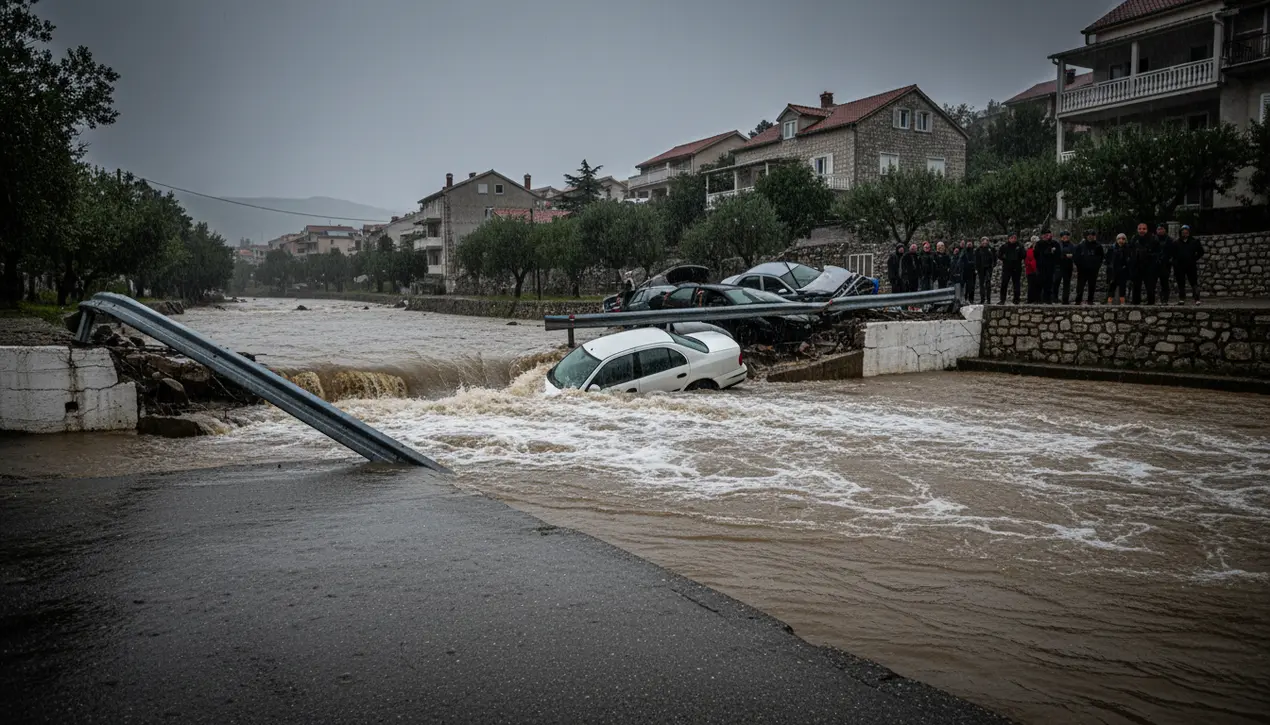
Otherweather & natural eventsFloods and Landslides
Heavy Rains Cause Flooding and Car Damage in Montenegro.
RA
Rachel Adams
2 days ago7 min read3 comments
The serene coastal town of Budva, Montenegro, was violently reminded of nature’s latent power this week when the Grđevice river, typically a placid or even dry feature of the landscape, transformed into a raging torrent. This was not a gentle overflow but a sudden, violent reclaiming of its ancestral path, a hydrological event that swept away parked cars as if they were children's toys, underscoring a terrifying new normal in our climate-disrupted era.The immediate visual drama of vehicles being tossed in muddy waters is stark, but the underlying narrative is one we’ve seen repeated with increasing frequency across the globe: a combination of intense, concentrated rainfall—the kind exacerbated by a warming atmosphere's ability to hold more moisture—and often insufficient or outdated urban planning. Local authorities were quick to issue warnings, a necessary reactive measure, yet the event prompts a more profound, uncomfortable question about proactive resilience.Montenegro, with its stunning Adriatic coastline, is a nation whose economy is deeply tied to tourism and its pristine natural image; an image now threatened by the very elements that define its beauty. This incident is a microcosm of a macro crisis.We can look to historical precedents like the catastrophic 2010 floods in Pakistan or the recurring inundations in Venice, each a lesson in the colossal economic and social costs of being unprepared. The Grđevice river’s outburst is a local emergency, yes, but it is also a data point in a grim global dataset tracked by climatologists and ecologists, a dataset that points to more frequent and severe weather extremes.The consequences ripple outward: from the immediate financial ruin for individuals whose cars were destroyed, to the potential for long-term infrastructure damage, soil erosion impacting local agriculture, and the insidious creep of insurance premiums that make coastal life increasingly unaffordable. Expert commentary from hydrologists would likely point to poor riverbed management and the concrete-heavy development that constricts natural water absorption, turning seasonal streams into deadly chutes.This is not merely a story of a storm; it is a story of human vulnerability in the Anthropocene, a stark reminder that our settlements are fragile impositions on dynamic natural systems. The path forward requires a difficult pivot from simply cleaning up after disasters to fundamentally re-engineering our relationship with watersheds, investing in green infrastructure that can bend with nature’s forces rather than break against them, a lesson Budva, and countless communities like it, are learning the hard way.
#featured
#Montenegro
#Budva
#flooding
#heavy rain
#river overflow
#cars swept away
#natural disaster
Stay Informed. Act Smarter.
Get weekly highlights, major headlines, and expert insights — then put your knowledge to work in our live prediction markets.
Comments
Loading comments...
© 2025 Outpoll Service LTD. All rights reserved.